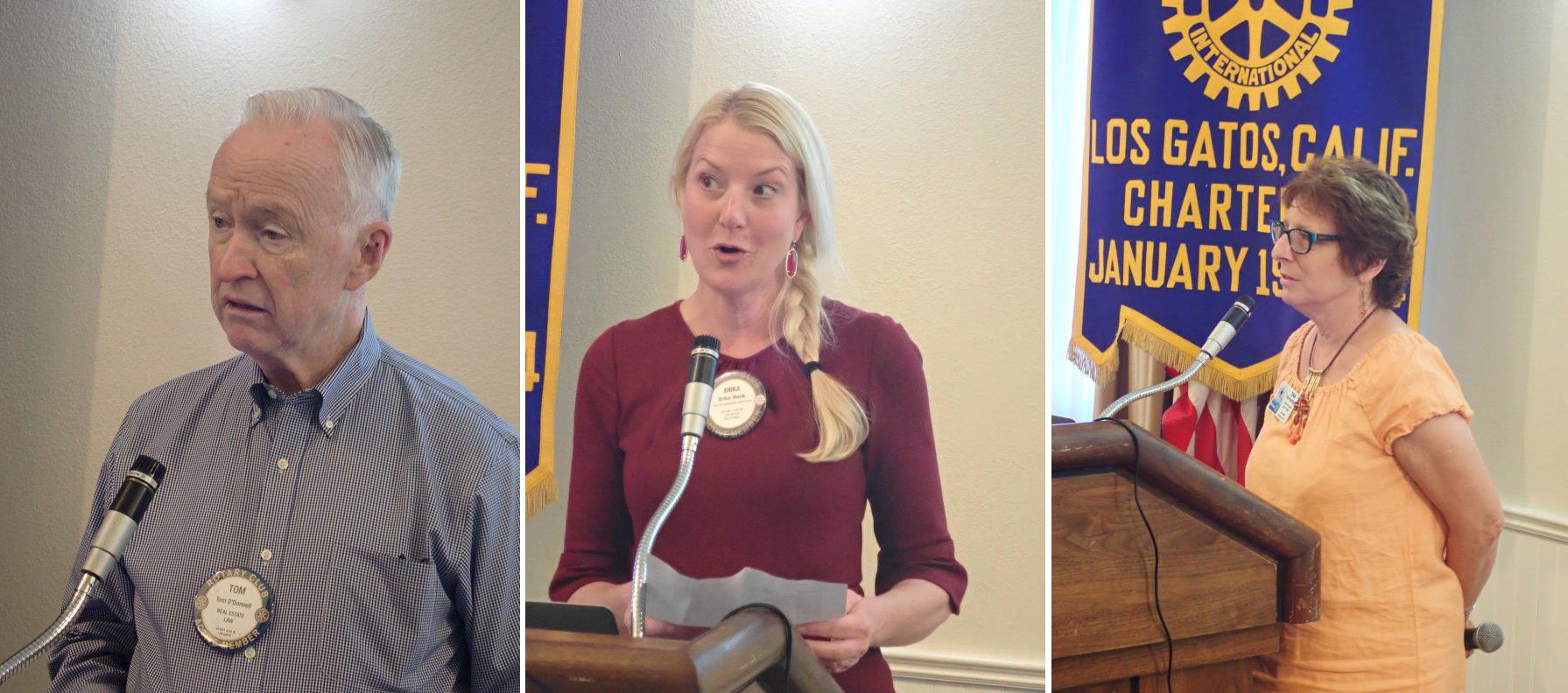
Tom O’Donnell received a warm welcome back to the club, and led the pledge as well as introducing guests. No visiting Rotarians, but we welcomed:
- Scotty Civy, guest of Andrew Howard
- Joe Bodecker guest of Maddie Smith
- Bob Zine and Julie Bradford, guests of Gae La Torre,
Ericka Buck provided the inspiration, and the poem she picked might well be in the next president’s letter. It asked us to consider the power of performing a single act, and the impact that can make.
Our club has made the decision not to have printed directories, so it is imperative that everyone get their data up to date on ClubRunner, and encouraged that everyone have the ClubRunner app on their smartphone. Need help? See Amy, Andrew Stearns, or Marty.
We’re making good progress towards The Rotary Foundation donations, but still have a way to go. We are now at 75% of club members contributing, but are aiming at 100%. And, while we are ahead of our donations last year, we are still $5K+ short of our $35K goal.
Andrew Howard went to a district event in Santa Cruz that considered how best to donate to Rotary. He suggested that people who are in the required minimum distribution phase of IRA distributions consider making a direct IRA distribution to a Donor Advised Fund or direct to Rotary. Clearly, this will depend on your financial and tax situation, but may make sense given the higher tax deduction threshold for ordinary charitable contributions. Andrew also encouraged all to consider making Rotary a beneficiary of your will, and if $10,000 or more you will be specially recognized for that as a Bequest Society member.
October 24 is World Polio Day. This has been a feature of Los Gatos Rotary social media presence for many days. Stay tuned for a possible live stream event on the 24th.
Upcoming Events:
- Ongoing: Please bring in your donations for Uplift Family Services. Bring gently used clothes, household items, etc.
- On November 2nd, there will be a benefit dinner for the Rotary Vietnam Project. Contact Avis LaGrone for tickets for this important cause.
- On 12 November there will be the quarterly breakfast at St. Lukes. Tina will send out an email with more info.
- Next week our speaker will be Ann Northrop, plant pathologist.
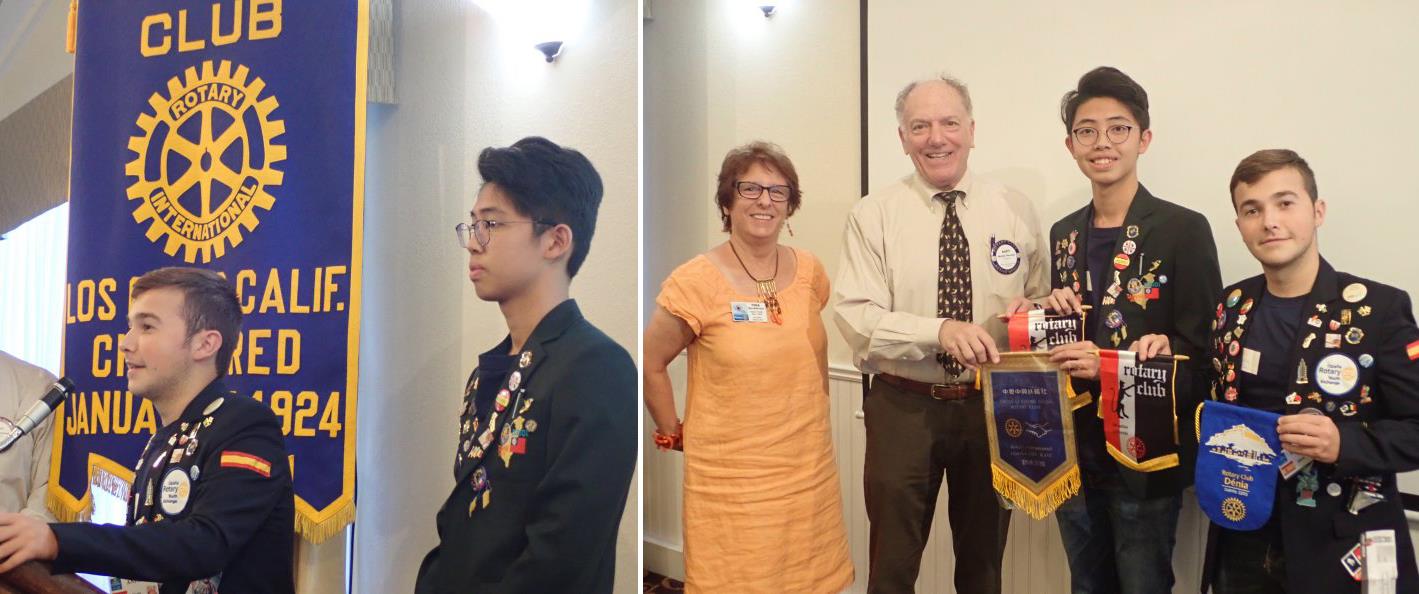
Los Gatos Rotary is sponsoring exchange students through the Rotary Youth Exchange program. This year we have two students living with the same family. And, since one of them, Andreu Ivar, is sponsored from the Gilroy Rotary club, we have sort of “adopted” him.
Andreu is from Spain. Amos Lin is from Taiwan. Amos had surgery a few weeks ago, but now is fine. Both are seniors at Willow Glen High School. They each exchanged Rotary flags with Marty.
Rebuilding Together Silicon Valley took place last Saturday at a mobile home park in Los Gatos. About thirty Los Gatos Rotarians and several Interactors participated. Special thanks to Dick Konrad for stepping in as volunteer coordinator at the last minute. The house looks great, and the homeowner Julia is quite happy. We’ll have pictures next week.
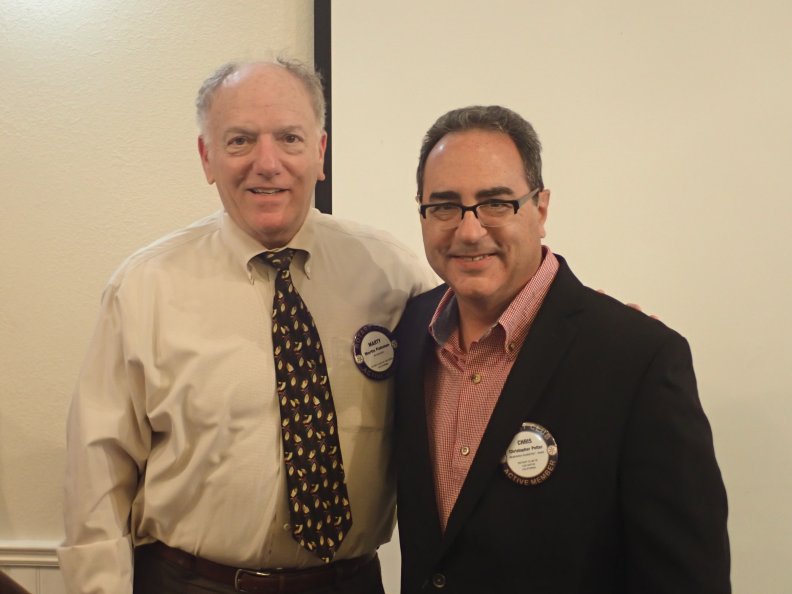
Chris Potter presented his Red Badge Bio. Chris was raised in rural Michigan. His children just about out of the nest (though some tuition still to go). He has been happily married for 30+ years, and a Los Gatos resident for decades.
Chris earned his Ph.D. in Biology from Emory. Just after graduation, he served as an intern supporting AID (U.S. Agency for International Development). Over two years he traveled almost everywhere in the world, and reviewed projects funded by AID in other countries. For example, dry land rice production in Asia, and forestry management in Central America.
For the last 30 years, he worked as a research scientist at NASA Ames. Example projects include working with Brazilian scientists to understand changes happening in the rainforest where he had the opportunity to train hundreds of Brazilian scientists.
He is now working on projects (sort of) closer to home - interior Alaska. He is looking at regional warming and global warming trends both through field trips and using satellite imagery. He and team are examining phenomena such as the loss of permafrost. And even closer to home, he is looking at the environmental impacts of wind and solar power generation in Southern California.
Chris now joins our club as a full blue badge-er!
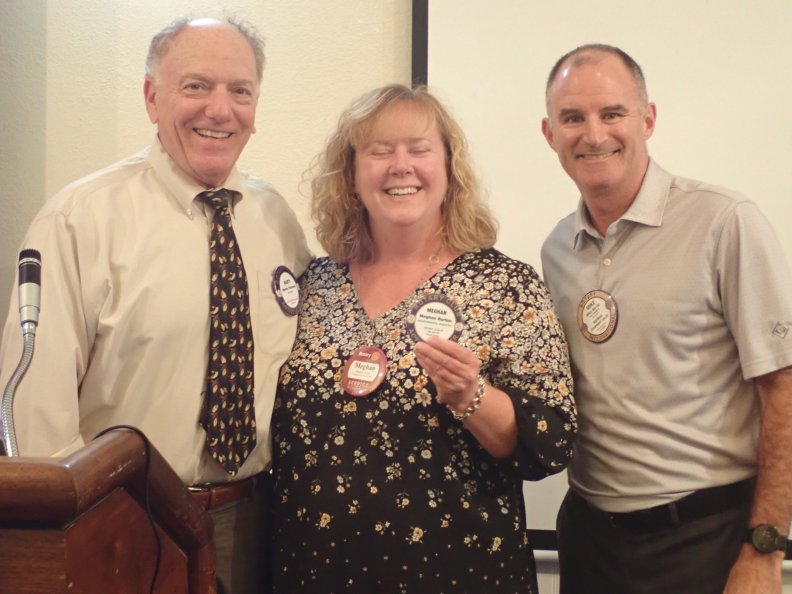
Meghan Burton is now also a blue badge-er, having fulfilled all requirements. Thanks to Mike Norcia her sponsor and long time friend, and to Patti Van der Burg as sponsor and mentor.
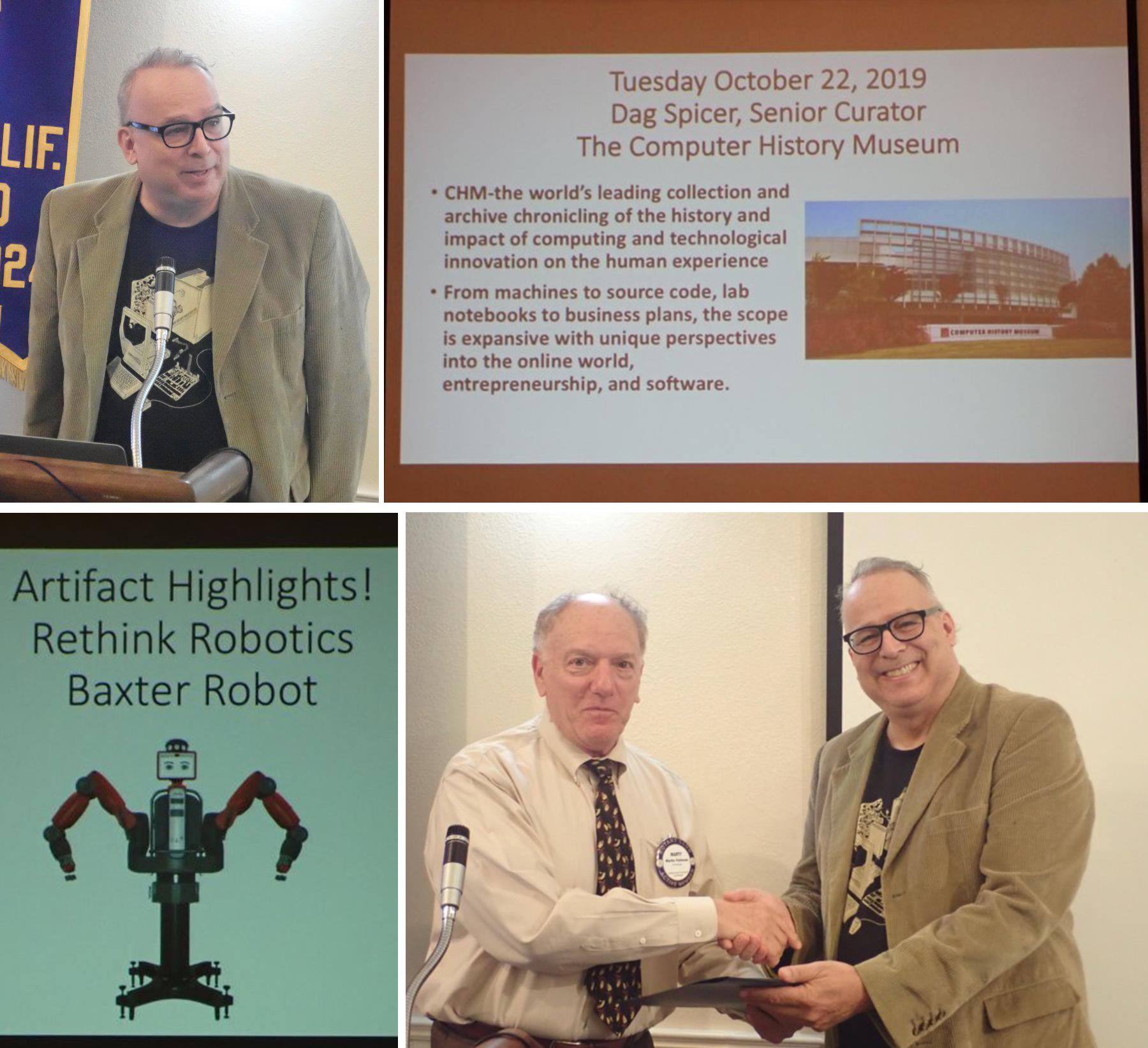
Today’s speaker was Dag Spicer, Senior Curator at the Computer History Museum.
Dag was trained as an electrical engineering, and was with the Computer History Museum from its very beginning, in 1996 in a quonset hut at NASA Ames. The Computer History Museum was an offshoot of a Boston-area Computer museum. Today, it is the largest computer museum in the world. Dag gave a “quick tour” of this special museum:
- The museum has more than 100,000 objects, two linear miles of archives, and more than 3,000,000 pages of manuals, reports, etc. These documents are publicly available at http://bitsavers.org/. This archive is considered a national treasure by the Library of Congress.
- Typically, the museum waits for ten years before bringing in a product. They want to ensure that they are collecting things that stand the test of time. Occasionally, they do collect interesting failures
- There are more than 100,000 pieces of ephemera - this might be items related to the computer industry - say a trade show badge or an old Apple sticker, and includes both still images and movies. The museum is becoming a major source of imagery and footage for Hollywood.
- While the Computer History Museum is a recognized success today, it was not obvious this was going to be a success. Would people really be interested in a computer history museum? Yes. There are more than 220,000 visitors and 3.0MM web accesses each year. It is also a great resource for students.
- Dag then described a few interesting artifacts at the museum.
- The kitchen computer: This was a standard computer made by Honeywell that was programmed by using switches to toggle in program instructions. Neiman Marcus thought they could package this as a recipe computer - and put a $10,600 price tag on it. It sold zero units.
- Cray-1 FPGA. The FPGA was a co-processor that offloaded the main Cray computer for math (floating point) operations. This was an eight foot high, 60,000 pound computer. Today, an equivalent device is five inches high and weighs five pounds. This is a fantastic example of Moore’s law - the number of transistors doubling in 18-24 months - and has powered the exponential performance increases and cost decreases we have seen in technology.
- The museum has a Google/Alphabet Firefly car. This is one of the first vehicles really designed for fully automated driving. There is no steering wheel, pedals, etc.)
- Baxter Robot: This 6’ high robot was designed to work cooperatively and safely beside human beings on an assembly line without danger to humans. The device is programmed through mimicry; the human demonstrates the work, and the robot follows along.
- WWII Enigma Machine. Used by Nazis for encrypted communication. Alan Turing used computational techniques to crack the Enigma code. People in power had to use a lot of judgment regarding the intercepted communications because they didn’t want to give away the extent of their knowledge.
- USAF/IBM SAGE (semi-automatic ground environment). This continental air defense system cost more to build than the manhattan project. IBM made $1B in profit from just this system. The total system used 3 million watts of power. The system would synthesize a complete radar picture of the continental air space, then add in information about all of the commercial airline traffic. Any objects remaining were unidentified and potentially hostile. Much of the packaging and manufacturing engineering technology that created the dominantly successful IBM/360 commercial program came from SAGE.
- Dag is happy to give club members passes to the museum. Please contact Doug Brent for Dag’s email address.